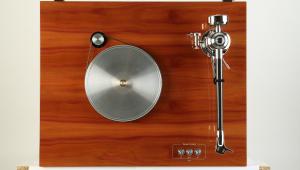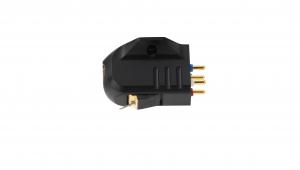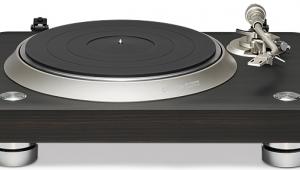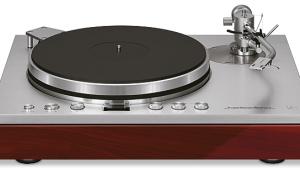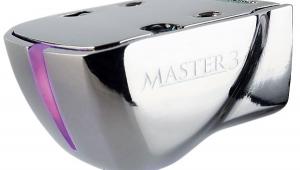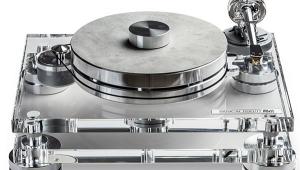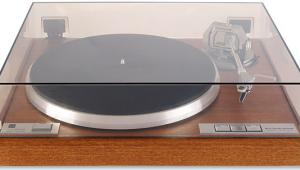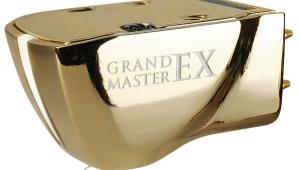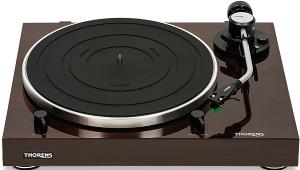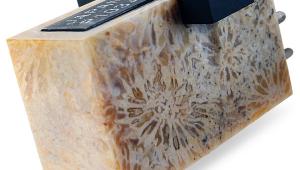Clearaudio Master Innovation (£14,500 (black, £15,400); Tonearm £3350; Stand £8000 (black, £8500))
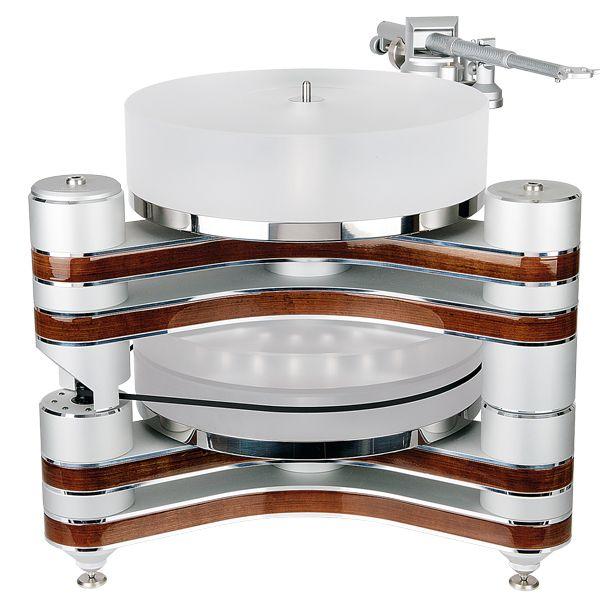
While the massive Statement continues as Clearaudio’s very top model, below it in the hierarchy comes this spectacular and impressive new flagship for the main Innovation Series.
It is built up on Clearaudio’s familiar, elegant, three-lobed chassis members, each constructed as a sandwich, with a core of Panzerholz (an ‘armour wood’) between two sheets of aluminium. The Master Innovation is in fact built as two separate units with the proprietary multi-platter arrangement facilitating Clearaudio’s magnetic contactless drive system.
The upper section is the turntable proper, with a 70mm-thick acrylic platter atop a 15mm stainless steel base platter. This runs on Clearaudio’s Ceramic Magnetic Bearing, the platter effectively floating on a cushion of air.
Immediately below is the 40mm-thick platter belonging to the lower turntable section, forming the driving member of the system. Its function is purely to provide contactless drive to the turntable system above. Its left hand front chassis pillar houses the DC motor, with control buttons for Off, 33.3, 45 and 78rpm.
Our Master Innovation came with the top pivoted 9in tonearm, the Universal; this beautifully-engineered arm uses miniature ballraces. Four different counterweights are provided, to accommodate cartridges of any weight up to 20g and more.
Air and momentum
It seems that this turntable could keep a sense of proportion, with music of any scale. On a 1971 VPO recording of two Schubert symphonies [Decca] the orchestral sound was a delight, spacious and airy, while the music had its proper drive
and momentum.
With our Benz Glider SL, Eric Clapton’s Backless [RSO Deluxe] ‘Walk Out In The Rain’ displayed a firm and impulsive quality to the electric bass, although the track as a whole did not sound so bass-heavy as it can. But with the superb Ortofon Cadenza Black, the rocking sounds of Eric Clapton were tougher and more upfront; there was a tremendous level of detail too. Bass-lines were powerful and the drums quick, while Clapton’s vocals had presence and a gritty intensity.
The Clearaudio/Ortofon combination showed it could do acoustic instruments too. With the 1974 recording of Beethoven’s Septet played by the Ensemble of St James [CfP], it was striking to hear the instruments firmly placed in a believable space. A fairly weighty balance suited this music, with its foundations laid by the double-bass, with horn and bassoon above in a warm lower-mid balance, while the treble seemed just incisive enough to give immediacy and pace.
Verdict
This model embodies most of Clearaudio’s signature technical advances. It does seem that the special bearing and drive system give it a sound with exceptional detail retrieval, as well as a stable, neutral and open quality.
Originally published in the 2014 Yearbook





